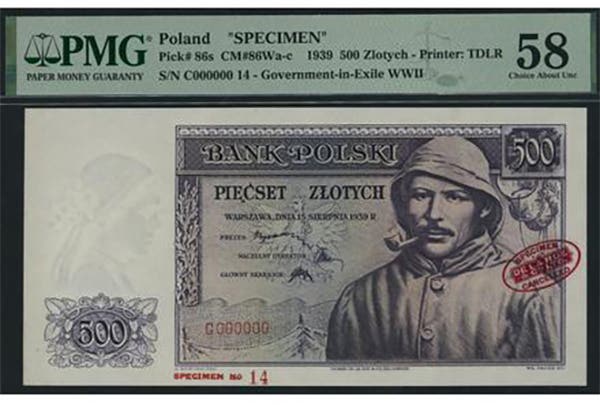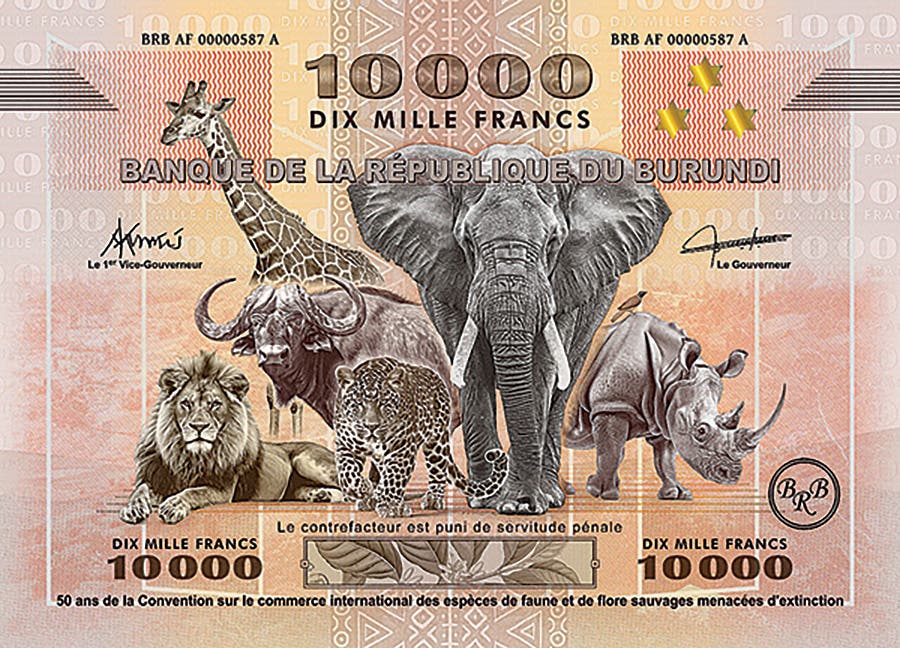Premiums for Modern Japanese Bank Note Serial Numbers
Japan recently introduced a new series of bank notes. Some of the examples of the 1,000-yen denomination are being sold online at a premium.
Why would anyone be willing to pay a premium for a new bank note when you can go to your bank and ask for one at face value?
This is a question some people in Japan may be asking themselves. Japan recently introduced a new series of bank notes. Some of the examples of the 1,000-yen denomination are being sold online at a premium.
Current Japanese bank notes have serial numbers that begin with two letters, followed by six numbers, and then one additional letter. The earliest notes printed in a series begin with AA, followed by AB and other letters to mark the second and all other issues after the first one million notes. Once ZZ has been used, the serial numbers will be repeated; however, they will be printed in a different color.
As an example, the previous version of the 1,000-yen note was printed in 2011 with an AJ prefix in brown; however, when the serial number prefix AJ was repeated in 2019, it was printed in blue.
The new 1,000 yen, which debuted on July 3, features a vignette of bacteriologist and pioneer in Japanese medicine Kitasato Shibasaburō on the front. Shibasaburō conducted research into infectious diseases, including Bubonic plague and tetanus. The back features a famous ukiyo-e work by artist Katsushika Hokusai called The Great Wave off Kanagawa. It depicts Mount Fuji on the horizon.
Special serial numbers matter to bank note collectors, and the new AA 1,000-yen notes are no exception. A video posted online featuring Japanese hard currency expert Minoru Terada notes that a previous 1,000-yen bank note with serial number 777777 has been valued at 28,000 yen, this being $168 U.S. above the note’s face value. A note with serial number ZZ555555Z was allegedly valued at 500,000 yen or about $3,100 U.S.
An older Japanese 10,000-yen note with serial numbers including ZZ-Z was recently offered at Yahoo Auction for 35,000 yen, an increase of $155 U.S. It appears the new 1,000-yen notes may have hit the ground running. Sources indicate some of the notes beginning with AA in the serial numbers realize a markup of 50 to 100 percent of their face value. When this article was being written, a new 5,000-yen note (face value of about $31 U.S.) with serial number AA123456JS had been bid to more than 200,000 yen (about $1,200 U.S.).
Yahoo Auctions only allows currency with a collectible value to be sold online. The major Japanese flea market site, Mercari, has a tighter policy, and for that reason, at the time this article was being written, it had yet to allow any new notes to be offered.
Japan’s new 1,000, 5,000, and 10,000-yen bank notes have new security features, including 3D holograms, intaglio printing, and tactile marks. This is the first change in Japanese bank notes in about 20 years. The immediate past bank note series will remain legal tender.
The front of the new 5,000 yen features a vignette of Tsuda Umeko, a pioneer in women’s education during the Meiji era. Umeko founded Tsuda University and became an advocate for women’s English education. The back of this note depicts Japanese wisteria or fuji flowers.
A vignette of Eiichi Shibusawa appears on the front of the new 10,000 yen. Shibusawa founded Japan’s first national bank, the precursor to Mizuho Bank and other businesses. He is considered to be the father of Japanese capitalism. The red brick Tokyo Station Marunouchi Building on the west side of Tokyo Station appears on the back. The station, built in 1914, is regarded as an iconic symbol of the capital. The building was proclaimed to be a National Important Cultural Property in 2003.
The letters I and O are similar to the numbers one and zero. Therefore, these letters are not used on Japanese bank note serial numbers. Instead, numbers from 000001 to 900000 are used. It is explained on the National Printing Bureau website that “the total number of serial numbers would be 24 letters x 24 letters x 900000 x 24 letters x 24 letters = 298.59 billion variations.”
The recently released bank notes are the fifth set issued since 1946 (Showa 21) and are officially known as Series E notes.
Not all past Japanese bank notes have serial numbers. Others were printed with figures and numbers that were not sequential. Some older issues also have duplicate serial numbers.
The 1,000-yen bank note is the workhorse denomination of the Japanese economy. According to the Bank of Japan, Japan’s central bank, the 1,000 yen has a life span of between one and two years. The 5,000 yen has a life span of about the same amount; however, a 10,000-yen bank note will likely circulate for four to five years.
According to the Bank of Japan, coins are currently issued in denominations of 1, 5, 10, 50, 100, and 500 yen (symbol ¥). The aluminum composition of 1 yen has not been changed since 1955. Both the 5 (brass) and 10 (bronze) yen have not been altered since 1959, while the current copper-nickel composition of 50 and 100 yen were each introduced in 1967.
The copper-nickel zinc composition 500-yen depicting the paulownia on the obverse and bamboo on the reverse was introduced in 2021. The central bank describes the coin as being bicolor-clad. The edge has helical ridges with two different pitches.
You may also like:








